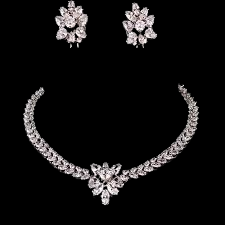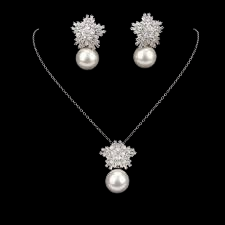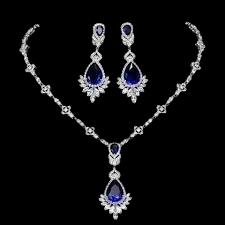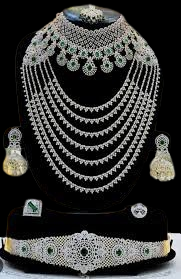Silver Polish
The goal of Silver Polish is to remove blemish and shine silver pieces. It should only be done a few times in the lifetime of a piece. That is because each time silver is polished, metal is removed from the piece. You might notice your silver jewelry blemishing faster than other pieces. That is because silver reacts with numerous environmental chemicals that cause oxidation and blemish.

Blemish is a thin layer of corrosion that makes your silver jewelry appear dull gray or black. Blemish is caused when the chemical element of silver reacts with hydrogen sulfide, which occurs naturally in the air. This is usually done in a polishing machine, making use of bristle brushes, cotton mops, and felt mandrels. The machine spins at speed, and the mops spin with the brush. Jewelry is then moved against the spinning mop. Not all jewelry is refinished to a polish.
Silver Polish is an integral part of jewelry making as it enhances the natural sheen of the metal and contributes to the life of the piece. The process of Silver Polish begins with a detailed examination of the item to understand the amount of polish required. The grades of abrasives are usually used in different sequences. Maintaining consistent pressure and speed in this process is essential to avoid creating further marks or reducing the thickness of finer details.
What is also important is having the appropriate buffing wheel with its specific compound because these buffs vary by different stages of the finishing. To remove scratches, for example, we use the stiff and rough buff which should have a cutting compound in the initial stages but, at the final glossing Silver Polish stage, we use soft loose-leaf buff. Proper tool selection for jewelry finishing will determine the success of a task in that it would not damage these fragile pieces of jewelry.
We instruct our crafters at our Shop on the type of tool to use according to the material and the finish to be achieved. When it comes to polishing, a motorized buffing wheel, when fitted with the correct Silver Polish compound, can make all the difference between efficiency and finish quality. Each tool has a different texturing effect, from matte finishes to dramatic, Powerful patterns.

How to Polish Jewelry?
- Before that high Silver Polish can be obtained, cleaning your jewelry item is necessary.
- Cleaning should be done properly to enable effective polishing.
- Cleaning jewelry item ensures that no dirt nor pollution affects the polishing of the jewelry item.
Working on Rough Castings
- The technique starts with rough metal forms from the casting of jewelry pieces.
- These gold and silver or brass castings are brought to the polishers in a cluster on a gold silver or brass tree.
- The polishers then carefully cut each piece of jewelry off from the host tree, grinding away the connection points called tropical sprue.
Polishing Machine
The precious metal expulsion is tumbled in magnetic or rotary tumblers with assorted mediums to burnish the rutty surface and level out the metal.
Smoothing out the Surface
- After tumbling, jewelers deburr the pieces with files and handheld rotary tools.
- They begin with coarse stone wheels and bits and slowly transition to tools with finer stones.
- This process gets rid of deep scratches and unwanted shapes and satisfies an even satin finish that flows with the lines of the design.
Getting to Shine
The metal starts to shine as rotary wheels made from felt and soft gauze, impregnated with less abrasive compounds, buff the metal’s surface. These wheels, rotating on handheld flexible stock or full upright polishing machines, are charged with less invasive compounds to spin a brilliant finish into the precious metal.
Texturing and Finishing
Once the crave polish is achieved, various textures and finishes can be applied to specified surfaces of jewelry to add character or enhance the design. These range from simple satin finishes applied with emery or sandblasting to patterns with a greater depth like Florentine cross-cutting and patterns cut.
Chemical Finishing Applications
The final step would involve the application of chemical finishes if there is any necessity like rhodium plating or antique patinas. What gives gold and platinum their inherent mystique is, in fact, the artistic talent of the jewelry polishing team that creates that shine and lustrous finish.
Some Additional Tips
To maintain the best possible state of your jewelry both before and after cleaning, remember the following tips:
- Avoid paper towels or tissues. While drying your silver jewelry, avoid paper towels or tissues as they contain after fibers and lint.
- Do not overload the barrel to avoid damage.
- Thread wires through pieces that have holes in them to prevent jamming.
- Secure chains on a wire before barrel polishing.
- Do not polish large, plain metal areas in barrels as they tend to get marred.
Be very careful with instructions to avoid overflow.
Advantages & Disadvantages
This is a very careful process of polishing that can help your jewelry greatly by removing scratches, stains, and tarnish and creating a smooth, shiny surface. It can prevent erosion and oxidation in your jewelry and also make it easier to clean and maintain. Silver jewelry, like necklaces, bracelets, and rings, tarnishes when exposed to your natural body oil and sweat. Chemicals in some beauty products, such as lotions and perfumes, may also react with your jewelry, causing them to tarnish.
On an elementary level, this process creates high-vibrating sound waves that create vaporization bubbles, which “scrub” away dirt or debris on the item. After using their Silver cleaners, many jewelers polish your jewelry using a Silver Polishing wheel. They may also clean the jewelry in steam. Silver Polish takes away blemish, and it shines silver pieces. It can only be done a few times in the lifetime of any piece because every time it is polished, metal comes off the piece.
For an exclusive Silver Polish, though, it does abrade the silver surface and chemically separates a little bit of the metal from the piece. Overuse can cause the wearing down of hallmarks, lack of briefness in decoration, and thinning of edges and high points that may lead to holes. It can be harmful if swallowed. It can cause stomach upset, nausea, or vomiting. It can cause skin irritation. Symptoms can be redness, drying, defatting, and cracking of the skin.

Main idea
Professional polishing can restore the original luster of even the most stiffly blemished silver. I don’t just silver polish! I hand polish, machine-polish, and conserve brass and other metals. Below are flatware handles that show the difference between a lightly polished surface and a refinished one. The jeweler polishes the jewelry using a wheel spinning fast-moving. This enables the jeweler to remove the scratches and corrosion from the metal.
Conclusion
Silver Polish is an art that demands patience, precision, and a deep understanding of the materials and techniques included. It is a very crucial step in the jewelry-making process that greatly enhances the beautiful appeal and value of the final product. The labor-intensive process of Silver Polishing can transform your jewelry by removing scratches, stains, and blemishes and by creating a smooth and shiny surface. Silver Polish can protect your jewelry from corrosion and oxidation, and make it safe to clean and maintain. Traditional Silver Polish initiation could take three to five years, which indicates the depth of this craft.


